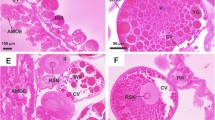Abstract
The aim of this study was to verify the influence of tea tree oil (TTO) (Melaleuca alternifolia) tested in its pure and nanostructured (TTO nanoparticles) forms on the reproduction of female Rhipicephalus microplus. For our purpose, female ticks were collected from naturally infected animals and treated in vitro with TTO (1, 5, and 10 %) and TTO nanoparticles (0.075, 0.375, and 0.75 %). In order to validate the tests, they were performed in triplicate using positive (amitraz) and negative (untreated) controls. It was possible to observe that pure TTO (5 and 10 %) and TTO nanoparticles (0.375 and 0.75 %) showed 100 % reproductive inhibition on female ticks. Additionally, pure TTO (1 %) also showed an acaricide effect (70 %), similarly to the positive control (78.3 %). This is the first study demonstrating the activity of pure TTO and TTO nanoparticles on female ticks. Therefore, based on these results, we were able to show that both forms and all concentrations of M. alternifolia affected tick reproduction by inhibiting egg laying and hatching. We were also able to show that TTO nanoparticles potentiated the inhibitor effect of pure TTO on the reproduction of R. microplus.
Similar content being viewed by others
References
Barker SC, Altman PM (2011) An ex vivo, assessor blind, randomized, parallel group, comparative efficacy trial of the ovicidal activity of three pediculicides after a single application-melaleuca oil and lavender oil, eucalyptus oil and lemon tea tree oil, and a “suffocation” pediculicide. BMC Dermatol 11:2–7
Broglio-Micheletti SMF, Dias NS, Valente ECN, Souza LA, Lopes DOP, Sanros JM (2010) Ação de extrato e óleo de nim no controle de Rhipicephalus (Boophilus) microplus em laboratório. Rev Bras Parasitol Vet 19:44–48
Callander JT, James PJ (2012) Insecticidal and repellent effects of tea tree (Melaleuca alternifolia) oil against Lucilia cuprina. Vet Parasitol 184:271–278
Camillo G, Vogel FF, Sangioni LA, Cadore GC, Ferrari R (2009) Eficiência in vitro de acaricidas sobre carrapatos de bovinos no Estado do Rio Grande do Sul, Brasil. Ciência Rural 39:490–495
Chagas ACS (2004) Controle de parasitas utilizando extratos vegetais. Rev Bras Parasitol Vet 13:156–160
Chagas ACS, Leite RC, Furlong J, Prates HT, Passos WM (2003) Sensibilidade do carrapato Boophilus microplus a solventes. Ciência Rural 33:109–114
Cho K, Park J, Osaka T, Park S (2005) The study of antimicrobial activity and preservative effects of nanosilver ingredient. Electrochi Acta 51:956–960
Constantinoiu CC, Jackson LA, Jorgensen WK, Lew-Tabor AE, Piper EK, Mayer DG, Venus B, Jonsson NN (2010) Local immune response against larvae of Rhipicephalus (Boophilus) microplus in cattle. Int J Parasitol 40:865–875
Drummond RO, Ernst SE, Trevino JL, Gladney WJ, Graham OH (1973) Boophilus annulatus and B. microplus: laboratory tests of insecticides. J Econ Entomol 66:130–133
Evans DE (1992) Tick infestation of livestock and control methods in Brazil: a situation reports. Insect Sci Appl 13:629–643
Farias MPO, Sousa DP, Arruda AC, Arruda MSP, Wanderley AG, Alves LC, Faustino MAG (2007) Eficácia in vitro do óleo da Carapa guianensis Aubl. (andiroba) no controle de Boophilus microplus (Acari: ixodidae). Revista Brasileira de Plantas Medicinais 9:68–71
Farias MPO, Sousa DP, Arruda AC, Wanderley AG, Teixeira WC, Alves LC, Faustino MAG (2009) Potencial acaricida do óleo de andiroba Carapa guianensis Aubl. Sobre fêmeas adultas ingurgitadas de Anocentor nitens Neumann, 1897 e Rhipicephalus sanguineus Latreille, 1806. Arq Bras Med Vet Zootec 61:877–882
Kora AJ, Arunachalam J (2011) Assessment of antibacterial activity of silver nanoparticles on Pseudomonas aeruginosa and its mechanism of action. World J Microbiol Biotechnol 27:1209–1210
Martinez HR, Abdala HM, Treviño E, Garza G, Pozas A, Rivera G (2011) Aplicación de la alternifolia a em alternifolia: nano-odontología. CES Odontol 24:87–91
Monteiro SG (2010) Parasitologia Veterinária. Roca, São Paulo, p 352
Mulla MS, Su T (1999) Activity and biological effects of NET products against arthropods of medical and veterinary importance. J Am Mosq Control Assoc 15:133–152
Neves RCSM, Ferraz RHS, Mendonça AJ, Lima SR, Barros LA (2012) Acaricide effect of the Melaleuca alternifolia essential oil on Otodectes cynotis. Braz J Vet Res Anim Sci 19:144–148
Pal S, Tak YK, Song JM (2007) Does the antimicrobial activity of silver nanoparticles depend on the shape of the nanoparticle? A study of the Gram-negative bacterium Escherichia coli. Appl Environ Microbiol 73:1712–1720
Panacek A, Kvítek L, Prucer R, Kolar M, Vecerova R, Pizúrova N, Sharma VK, Nevecna T, Zboril R (2006) Silver colloid nanoparticles: synthesis, characterization, and their antibacterial activity. J Phys Chem B 110:16248–16253
Salisbury FB, Ross CW (1992) Plant physiology. Wadsworth, Belmont, pp 357–407
Salopek-Sondi B (2004) Silver nanoparticles as antimicrobial agent: a case study on E. coli as a model for Gram-negative alternif. J Colloid Interface Sci 275:177–182
Santos FCC, Vogel FSF, Monteiro SG (2012) Essential basil oil effect (Ocimum basilicum L.) on cattle tick Rhipicephalus (Boophilus) microplus in vitro experiments. Semina Ciências Agrárias 33:1133–1140
Simões RP, Groppo FC, Sartorato A, Del Fiol FS, Filho TRM, Ramacciato JC, Rodrigues MVN (2002) Efeito do Óleo de Melaleuca alternifolia sobre a infecção estafilócica. Revista Lecta 2:143–152
Vendramini MCR, Camargo-Mathias MI, Faria AU, Bechara GH, Oliveira PR, Roma GC (2012) Cytotoxic effects of andiroba oil (Carapa guianensis) in reproductive system of Rhipicephalus sanguineus (Latreille, 1806) (Acari: ixodidae) semi-engorged females. Parasitol Res 111:1885–1894
Vieira TR, Barbosa LCA, Maltha CRA, Paula VF, Nascimento EA (2004) Constituintes químicos de Melaleuca alternifólia (Myrtaceae). Quim Nova 27:536–539
Walton S, Mckinnon M, Pizzutto S, Dougall A, Williams E, Currie BJ (2004) Acaricidal activity of Melaleuca alternifolia (tea tree) oil: in vitro sensitivity of Sarcoptes scabiei var hominis to terpinen-4-ol. Arch Dermatol 140:563–566
Author information
Authors and Affiliations
Corresponding author
Rights and permissions
About this article
Cite this article
Pazinato, R., Klauck, V., Volpato, A. et al. Influence of tea tree oil (Melaleuca alternifolia) on the cattle tick Rhipicephalus microplus . Exp Appl Acarol 63, 77–83 (2014). https://doi.org/10.1007/s10493-013-9765-8
Received:
Accepted:
Published:
Issue Date:
DOI: https://doi.org/10.1007/s10493-013-9765-8




